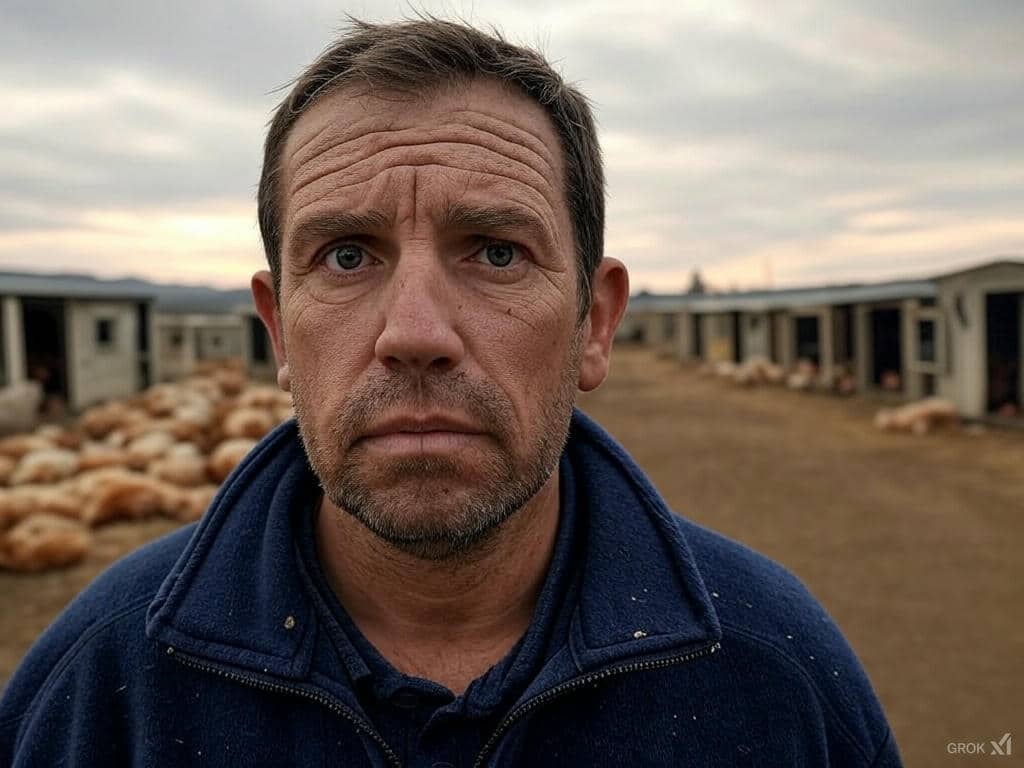In a heartbreaking turn of events, Hickman’s Ranch, a prominent egg-producing farm, has suffered a catastrophic loss of approximately 1 million hens due to an outbreak of avian influenza, commonly known as bird flu.
The ranch’s owner has spoken out about the emotional and economic toll of this disaster, shedding light on the challenges faced by the poultry industry amid recurring waves of this highly contagious disease.
News publications nationwide have reported on the incident, emphasizing its scale and implications.
The outbreak at Hickman’s Ranch was first detected in late February 2025, when routine testing revealed the presence of the H5N1 strain of avian influenza, a particularly virulent form of the virus that has plagued poultry farms globally in recent years.
According to reports, the owner described the rapid spread of the disease as “unstoppable,” despite the farm’s adherence to stringent biosecurity measures.
“We did everything we could—sanitation, restricted access, monitoring—but it still got through,” the owner was quoted as saying in a statement covered by multiple outlets.
The loss represents a significant portion of the ranch’s flock, crippling its production capacity virtually overnight.
Veterinary experts cited in news coverage explained that bird flu spreads swiftly through contact with infected wild birds or contaminated equipment, making it difficult to contain once it infiltrates a densely populated facility like Hickman’s Ranch.
To prevent further spread, the remaining hens were culled—a standard but grim protocol in such outbreaks—leaving the farm eerily silent.
“It’s like losing a part of your family,” the owner remarked, a sentiment echoed in reports highlighting the personal devastation and financial ruin.
Economically, the impact is staggering. Hickman’s Ranch supplied eggs to supermarkets and wholesalers across several states, and its sudden absence from the market is expected to exacerbate already strained egg supplies.
News publications noted that egg prices, which have fluctuated wildly in recent years due to similar outbreaks, are likely to spike again as a result.
One article estimated that the loss of 1 million hens could translate to tens of millions fewer eggs annually, a blow to both consumers and the ranch’s bottom line.
“We’re looking at months, maybe a year, to rebuild—if we can even afford it,” the owner told reporters, hinting at the uncertainty of the farm’s future.
The incident has also reignited discussions about the vulnerability of industrial-scale poultry operations.
Critics interviewed by various news sources argue that the high concentration of birds in such facilities creates a perfect storm for rapid disease transmission, while the owner of Hickman’s Ranch countered that modern farming practices are essential to meet consumer demand.
“We’re feeding millions of people. This isn’t just about us—it’s about the system,” the owner stated, a perspective that has sparked debate in the wake of the tragedy.
Federal and state agricultural agencies have stepped in to assist, offering compensation and support for disinfection efforts, though the owner expressed skepticism about whether it would be enough to recover.
News reports indicate that the U.S. Department of Agriculture is monitoring the situation closely, as this outbreak adds to a growing list of bird flu cases in 2025.
According to health officials cited in the coverage, while the risk to human health remains low, the economic ripple effects are undeniable.
For now, the owner of Hickman’s Ranch is left grappling with an uncertain path forward.
“You don’t realize how fragile this all is until it’s gone,” they said, a poignant reflection that has resonated widely.
As the poultry industry braces for further challenges, the loss of 1 million hens at Hickman’s Ranch stands as a stark reminder of the relentless threat posed by avian influenza—and the resilience required to face it.










